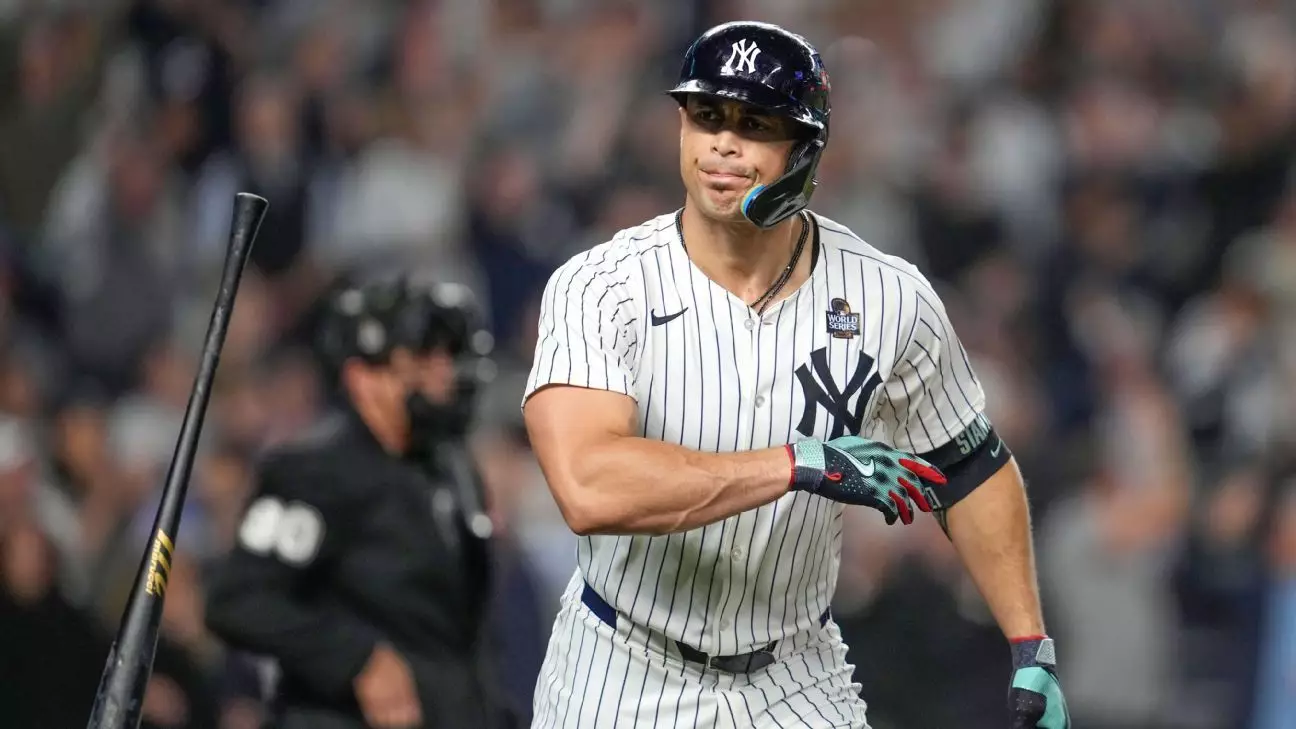Giancarlo Stanton’s return to the New York Yankees lineup, after a prolonged spell on the injured list, is injecting a palpable excitement into the team’s fanbase. Just recently, the star designated hitter participated in live batting practice at Yankee Stadium, marking a significant milestone in his journey back from elbow tendinitis. With a promising outlook, Stanton suggests he could possibly return by the end of May—an optimistic scenario that has fans buzzing with anticipation.
The journey Stanton has endured exemplifies the struggles and determination faced by elite athletes battling injuries. Having started his 2023 season on the sidelines due to a combination of tendonitis that has affected both arms, Stanton’s comeback journey was anticipated with bated breath. It’s not merely about swinging the bat; it’s getting back into game shape and, more importantly, proving the body can withstand the rigors of major league play. His two plate appearances during batting practice—where he managed to hit a ground ball and earn a walk—serve as a satisfying reminder of his potential productivity on the field.
A Strategic Maneuver by the Yankees
The Yankees’ recent decision to transfer Stanton from the 15-day to the 60-day injured list was a pragmatic move in a tightly contested roster landscape. By making room for new talent, such as Bryan De La Cruz, the Yankees are positioning themselves strategically. This move is emblematic of the balancing act teams must perform; the need to have a competitive edge while managing player health and fitness. Although this roster adjustment pushed Stanton’s anticipated return, it underscores the organization’s long-term vision over short-term gains.
Stanton himself understands the intricacies behind these decisions. “[The Yankees] needed a 40-man roster spot,” he acknowledged, showing his awareness of team dynamics and the necessity behind such actions. It’s a cooperative world wherein individual aspirations must align with organizational goals for success.
Physical Pain vs. Mental Tenacity
Stanton’s narrative is one of grit and determination, as he openly discussed the physical challenges of returning from injury. His admission that he must “play through pain” reflects an admirable, albeit concerning, reality of professional athletics. While many players might skirt around the issue of pain management, Stanton is candid about the sacrifices required to compete at his level. “If I’m out there, I’m good enough to play,” he asserted, illustrating a mindset that many may find inspiring yet worrisome.
Injuries can severely affect a player’s performance, and Stanton’s history with elbow issues raises concerns. He played through significant pain during last year’s World Series, hitting seven home runs in just 14 games—a testament to his resilience. Yet the toll of the recurring pain is undeniable. “At one point, season-ending surgery was possible,” he admitted. This perspective should resonate with fans and raise questions about player health in a sport that often glorifies toughness over caution.
The Upcoming Rehab Assignment
Looking ahead, Stanton hinted at a potential rehab assignment, although he refrained from specifying its duration. This point is crucial, as it signifies that while he may soon return to the lineup, the road to full recovery is not immediate. Yankees manager Aaron Boone sounds optimistic, suggesting that Stanton may not require an extensive rehab stint due to his status as a designated hitter—a role that typically demands less defensive physical strain.
The uncertainty surrounding the exact timeline illuminates the difficult choices athletes confront when returning from injury. These choices are further complicated by the team’s dependency on their star players’ performances to compete effectively. There lies an inherent tension between wanting to rush back into the lineup and ensuring that any return does not jeopardize long-term health.
In an era where performance analytics are becoming more pronounced in baseball, the emotional and psychological aspects of rehabilitation are often overlooked. Stanton’s journey may indeed serve as a case study in that regard, offering insights into the realities of balancing passion and profession. As he prepares for his comeback, fans remain hopeful, but also wary of the potential risks that come with an athlete’s resolve to play through adversity.

